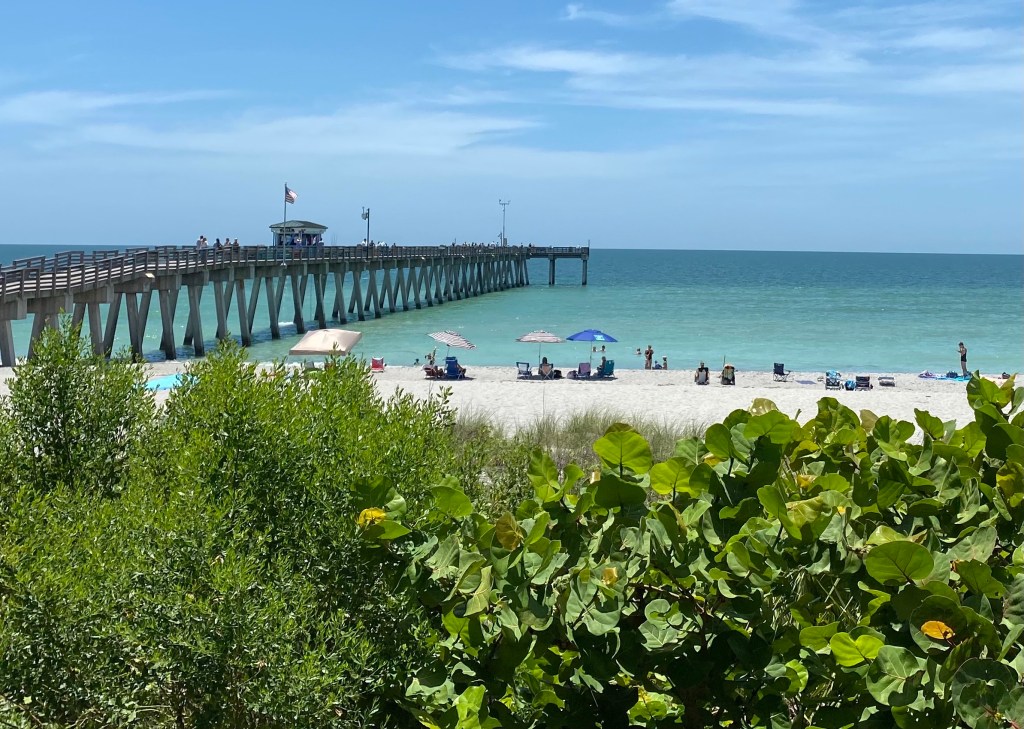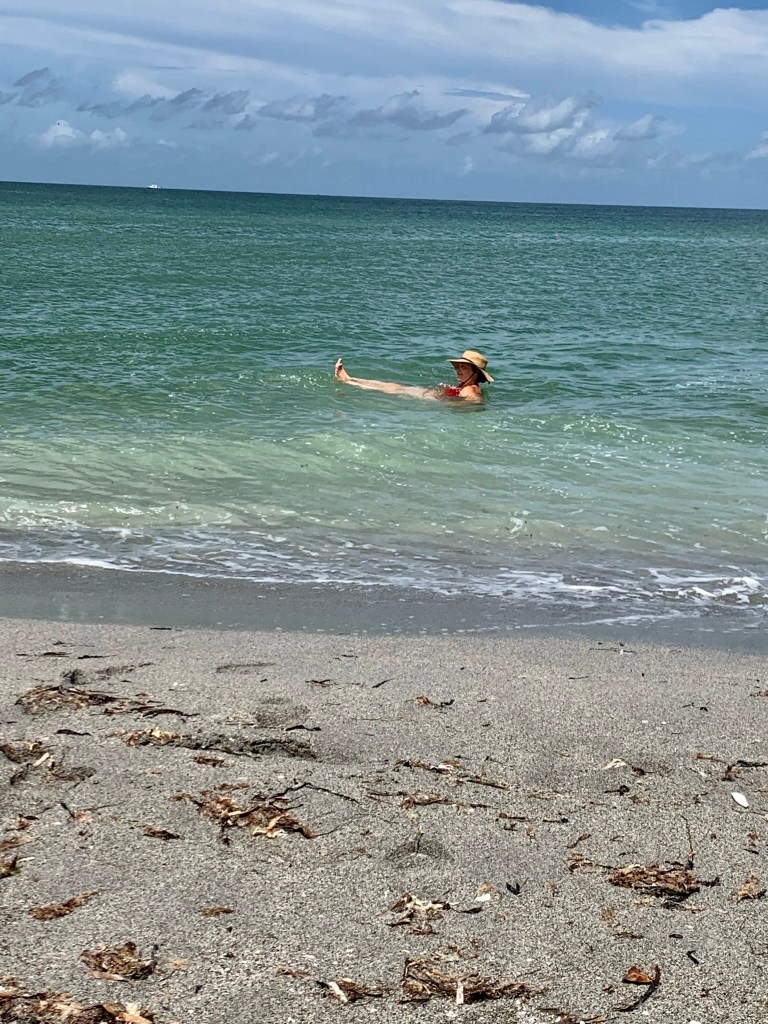Some days in Venice the slow pace of silver-haired retirees and the quiet beauty of historic architecture felt like a time capsule. We will miss the quaintness of this little city on Florida’s Gulf Coast. The center of town with its 1920s and ‘30s hotels, houses, and apartment buildings were all built by developers rightly convinced that someday Florida would be a prime vacation spot. Today, small shops built in Italianate style are juxtaposed against newer buildings, including a the Daquiri Deck with its icy air conditioning, and wall of swirling machines full of icy red and yellow grown-up Slurpees.

But the original plan is clear. And what impressive forethought Venice represents. It was just an idea—now nearly 100 years old, that has come to pass like a prophecy fulfilled in shady lanes and cobbled avenues. Palms, banyans, and oaks that drip with Spanish moss now dwarf passing cars, half-naked tourists, retirees, and families with children who walk along the old boulevards that once were just drawings on a page. And none of us would be as awed by the carefully curated beauty of this place had not someone thought to plant trees by which they would never be shaded.
Anoles of shifting colors flit across the sidewalks in this place. Birds flock to the beach; gulls, sandpipers, and the Brown Pelicans aloft on sea breezes like floating gangsters flying low with scruffy feathers ruffling out of place in the wind.
White and black ibis are ubiquitous in Venice, busy stabbing their foot-long orange beaks into the grass most mornings. Egrets and herons abounded as well, but none as friendly as the one I mentioned earlier, the Great Egret who arrived in three feet of white feathered regalia to the screened porch of our condo in Ft. Myers. We named him “Charlie” and he wasn’t shy. He would stand staring at us, a patch of green beside his yellow bill, and his remarkably long neck moving into an ‘S’ shape and then stretching out to its full length before he would tuck it up and fly away with no more apparent effort than a paper airplane.

That was also the spot where we sighted a Roseate Spoonbill flying over a tennis court. It’s a big, pink bird, like a flamingo’s slightly weirder looking cousin. And since we never saw flamingos, except for the plastic ones staked in yards, this rosy species remains one of my favorites in the area.
We never saw an alligator, but gopher turtles were plentiful along the bike paths. And I will miss seeing them, as well as all the bicycling, golf carting, and walking we did together. I know I will miss the flats of the sandy soil in Florida. Hills there are usually boat bridges—and we will miss the views from atop those of sailboats, speedboats, trawlers, yachts, kayaks, paddleboards, and jet skis.
Sadly, I will also recall the fish that swished ashore breathless, as an algae bloom called red tide sucked the oxygen from the water and left them strewn rotting on the beaches of Siesta Key, Venice, and elsewhere.

Venice already pays attention to straws that disintegrate rather than becoming a problem in the ocean. They have dozens of sea turtle nests marked all along a shore lit only in red lights at night to help guide these creatures toward the sea. Figuring out the red tide is a priority.
Maybe the selfless vision of the beautiful plan for Venice, created so long ago, can continue to invigorate the people in Venice today, to sustain its attractiveness—both natural and created. I hope so.
I can still smell the water all around in intracoastal waterways, harbors, estuaries, beaches, and the thick scent of salt and seaweed. I will always remember the sensations of floating in the waves of the Gulf and at the same time seeing the dorsal fins of dolphins leaping just a few yards away from me. Amazing.
###
Lovely essay, as usual. Thanks for keeping us all abreast.
Where to next?
LikeLike